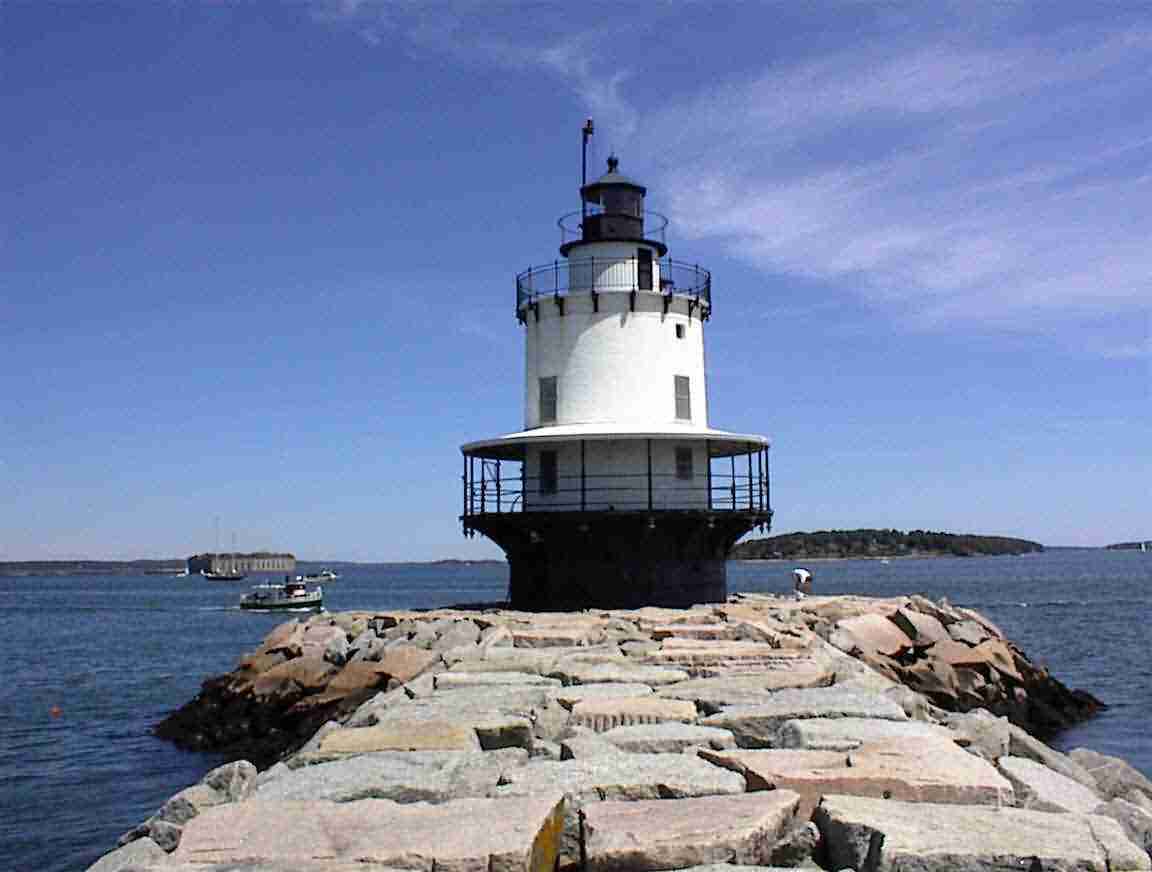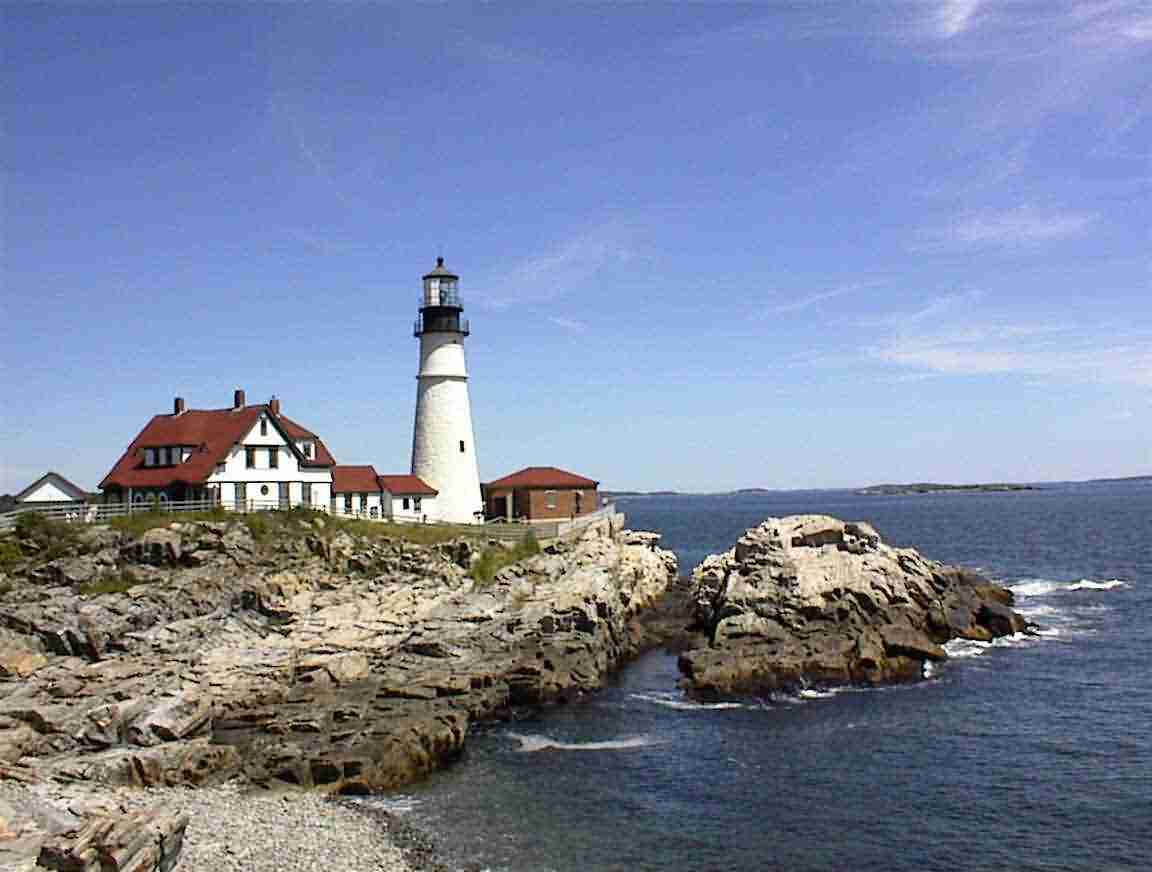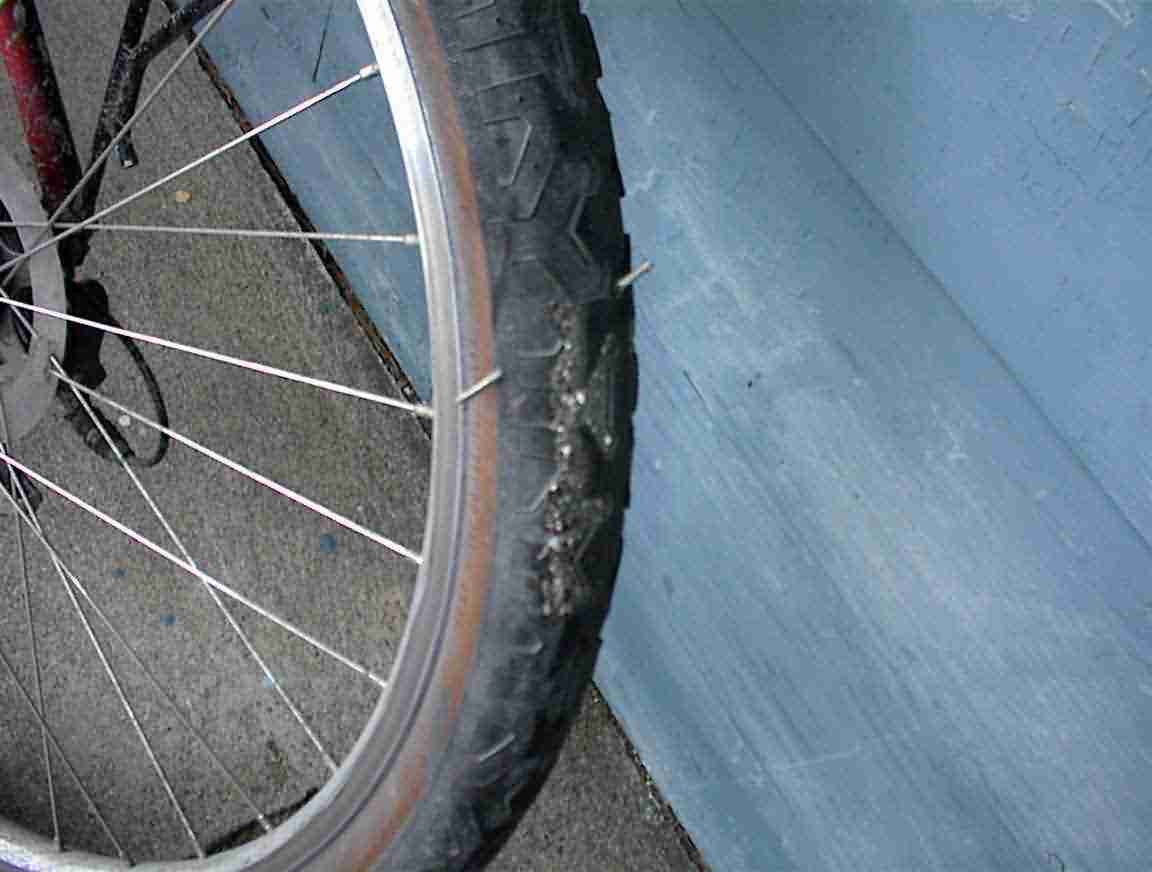
4 August - Day 60: Portland Maine - 51.0 km @ 16.3 km/h
The day started with muesli and blueberries. If you’ve been following my trip you will know that they are probably my favourite fruit and today was the last day that I would be having any until the season starts in NZ—around six months from now. I was not feeling that good as my shoulder was in a fair bit of pain; this had also meant that I didn’t sleep that well. However, it was a sunny day outside so I was resolved to make the most of it.
My plan was to cycle to the Portland Harbor Museum which is on the south bank of Portland harbour. It wasn’t too far from where I was staying and there was the added attraction of a lighthouse at the site as well. Without all my panniers on the bike it was like riding a sports car after a truck and I found myself at the museum before too long.
Located on the bank of the harbour, it overlooked a fort in the harbour which was built in the 1850’s. Unfortunately, it was rendered obsolete as soon as it was finished since it was built from granite but with the advent of rifled barrels the granite would shatter like shrapnel so it was never manned. In all likelihood it was some form of a make work project for idle soldiers.
The museum displayed exhibits related to local maritime history. It was really comprised of two sections; one on the Clipper ship ‘Snow Squall’ and the rest. As I was the only person there the volunteer guide took me around and we had a great chat.
Clipper ships are famous but I had always wondered what was so special about them. They were designed with a narrow hull with a sharp, hollow bell and used an enormous amount of sail. They were developed in the 1840s for trade with China and flourished during the California Gold Rush of 1849 which sent freight rates to the Pacific soaring. Though seldom achieved, their goal was to run from New York to San Francisco in about 100 days via Cape Horn at the southern tip of South America. Sometimes inclement weather meant that it took 150 or more days for the trip. From California they would sail to China where they would collect tea before returning to the USA. There was a great deal of profit to be made if you were among the first with that season’s tea and many fortunes were made. However, their economic life was limited and by the mid-1850s the boom was over and the clipper ships, expensive to build and operate, died out.
The display showed how clipper ships were built. The plans were a closely guarded secret and were usually destroyed once the ship was built to prevent copying. As a consequence, there was no record on the design or construction of clippers—until the ‘Snow Squall’ project. The Snow Squall was a clipper which ran around near Cape Horn and managed to limp to Port Stanley in the Falkland Islands, leaking badly. She was run ashore in April 1864 and left to the elements. The locals used her wood and later a dock was built over the ship and other hulks, filling most of her hull with rocks.
In 1979 she was rediscovered and it was realised that this was the only intact remains of an American Clipper ship. Just over 35 feet f her bow remained jutting out from the dock, half submerged. After a series of expeditions they recovered the bow and other parts of the vessel which were brought to the museum for conservation. Many of the large pieces were sent to other museums but Portland retained some large pieces which showed the construction methods.
It was fascinating to look at this 150 year old ship and to follow through on how it was formed from the timber, joined together with steel rods, and then caulked to make it water tight. The wood looked to be primary growth timber since the grains were very close together, and this must have been great fun to work with and drill using only hand tools. It is an impressive feat to see what the workmen achieved with the simple tools they had on hand—and a complete lack of detailed technical drawings. They truly were craftsman in those days.
The museum contained photographs and other records of life at sea. It was interesting to see how the captains were encouraged to take their families on board with them. Not surprising given that trips could last several years but what about the other crew members? One of the displays was of a woman who went to see with her husband within a week of getting married and didn’t return to Portland for three years; and by then she had two children. A book has been published of her letters. They were tough in those days …
Portland was a major shipbuilding port and built Liberty ships during World War II. These were ships which were designed to be quick to build to replace the heavy losses by the German submarines. What I didn’t realise was that they were designed by the Royal Navy and the first ones were built under contract before the US entered the war. Once the US was in the war they changed the design so that it was oil instead of coal powered and ramped up production. Over 2000 were built by the end of the war. My guide, realising my interest in history, took me back to the office and showed me some photos of the first boats being built.
Eventually I dragged myself from the museum and went over to the Spring Point Ledge Lighthouse. This was built in 1897 and is a caisson design with three levels to it. Originally it was set off from the shore but after a few ships were wrecked they built the causeway out of large granite blocks. It really was quite scenic with the harbour in the background and the boats sailing by.

I had been told that I should visit the Port Elizabeth light house so I headed south, dead reckoning my way along the shore. There were many stately homes lining the road with large yards and lots of mature trees. My kind of area. Eventually I found my way to the park and cycled up to the light house. Nestled on the rugged shore with the lighthouse keepers house next to it I thought it was one of the most picturesque places that I have ever seen. The photo below doesn’t do it justice.

There were many tourists about and that I saw someone wearing a cycling shirt from Maryland. We chatted for a while and they told me that the park in northern Maine at Acadia was spectacular for cycling, with great trails through the forest and stunning sea views. They said it was the kind of place where you cycled and then stopped every five minutes to savour the views. Sounds great … will have to visit there next trip.
It was time to explore Portland proper so I headed up into the city. The old commercial area near the port had been revitalised and gentrified with cafes and upmarket shops. I enjoyed wandering about looking at and visiting some of the shops. It was fun playing tourist for the day, particularly since it was sunny and warm. I knew that I would soon be back in winter in NZ so wanted to savour my last summer day.
There was a recreational path along the shore which I cycled along. There were lots of walkers and cyclists using the path. With the ocean right next to the path it was beautiful. I followed the path around to where it entered a bay and at the top of the bay stopped at the parking lot to ask for directions from an elderly couple.
Ed and Carol were from Florida but had a map and helped me find my directions. They were cyclists themselves and were up for the summer, escaping the heat. Originally from Boston they had moved to Florida to retire but return to New England each year. They were intrigued by my trip and asked me lots of questions and went on that I should have told the local newspaper who would have reported on it. I explained that it was a personal journey so I had no interest in publicising it.
From there I went and had lunch at an Italian restaurant. The portions were so huge that I said to the waitress that she must not eat there; she was too slim. I don’t know how anyone can expect to eat so much on a regular basis.
It was getting late and it was time to head back to the hotel. About 3 km from the hotel I had a puncture … and what a puncture! A nail went through the tire. Fortunately, the puncture was sealed by the nail so I was able to cycle home and patch it. What a way to end the trip…

I cleaned the bike and packed my bags before retiring early. I had an early start with a 5:50 a.m. flight. I was very tired but I couldn’t sleep, due in part to the noise of the traffic and the TV next door. I normally use ear plugs but didn’t want to risk sleeping through my wakeup call or alarm watch. My 03:45 wakeup came too soon and I was on my bike on the way to the airport by just after 4 a.m. There was hardly any traffic on the roads which was great, unless there was a problem in which case I’d be in trouble. My bike felt a bit funny and I was concerned that my repair was not as good as it should have been. I was not inclined for a quick repair on a cool morning while trying to make my flight.
When I got to the airport I retrieved my box and began to take my bike apart. After wrapping up my bike in bubble wrap I put it in the box with most of my gear and taped it up well. My rear panniers were put into a separate box and I checked in. Then it was on the plane on my way home to NZ.
And so ended a fantastic trip.
loans loans loans loans loans loans loans loans loans loans loans loans loans loans loans loans loans loans loans loans loans loans loans loans loans loans loans loans loans loans loans loans loansloans loans loans loans loans loans loans insurance insurance mortgage mortgage